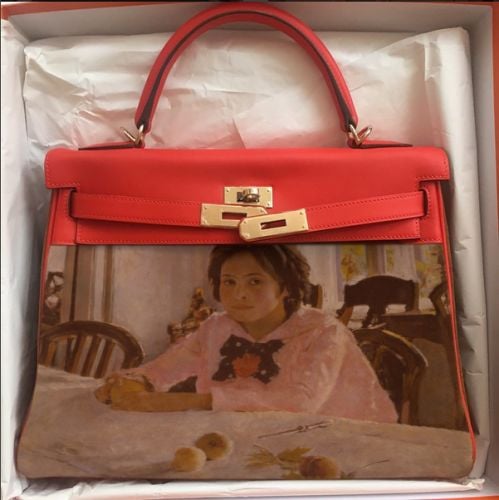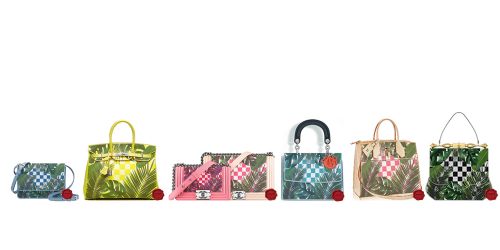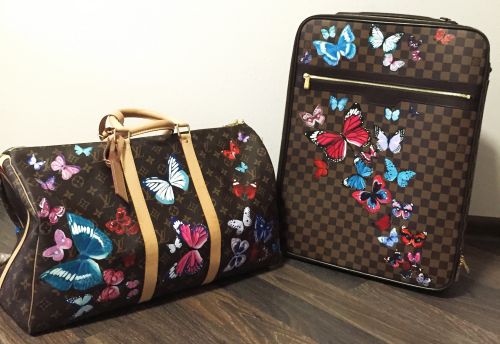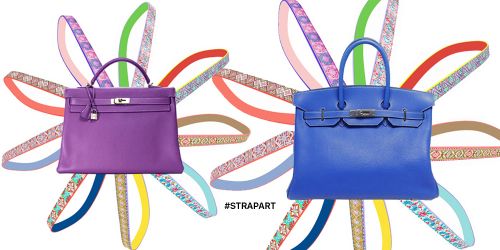There was a time when customized products and personalized services were catered exclusively for the discerning and well heeled.
London’s Savile Row stands as a testament to personalized luxury. In a world full of luxury dumbed down and mainstream, there has been an up-shift by certain manufacturers trying to offer tailored ranges and services to a wider audience.
This development is technically referred to as “mass customization” and “mass personalization”. So why the shift?
Simply put, clients are demanding more and don’t share the same sense of brand loyalty as previous generations. Marketing strategists believe that focus must be on generating a community tied to customer satisfaction. I won’t call this CRM on steroids but the analogy could hold.
With ever increased competition, brands must show genuine benefit to hold the client’s attention as well as affection. The trend is quite sweeping once you start to examine the determinants. Look at fashion apparel, beauty care products, shoes, bicycles, laptops, and even smart phones. All claim they are perfect for customization.

Mass Customization vs. Mass Personalization
According to Wikipedia, the definition of the term “mass customization” in marketing, manufacturing, call centers and management, is the use of flexible computer-aided manufacturing systems to produce custom output.
These systems combine the low unit cost of mass production processes with the flexibility of individual customization.
“Mass personalization” on the other hand, is the custom tailoring by a company in accordance with its end users tastes and preferences.

The main difference between the two concepts is the ability for a company to give its customers an opportunity to create and choose product specifications. There are however limits.
The Financial Times lists “personalized production” among six other factors driving the future of manufacturing – namely network manufacturing, technological innovation, industrial democracy, boutique manufacturing, cluster dynamics, and environmental imperatives.
A case in point: Pomarfin is a small family owned Finnish footwear company. With strong competition from Asian manufacturers, the firm decided to change its strategy. It carefully looked at the adaptation to the mass customization paradigm, alongside a revision of its business model. Its choices were to either outsource the manufacturing of its shoes to China and simply become an ubiquitous brand, or differentiate itself while keeping its production in Europe. It chose the latter, by deciding to compete in mass customization, making made-to-measure shoes for discerning and affluent men. Pomarfin then introduced the clever concept of installing and utilizing a foot scanner in retail stores, which sells its shoes. The client’s foot gets scanned and the image is then uploaded to a server and sent to the firm’s manufacturing plant. The client then decides if he wants his exact fitting shoes shipped directly to his address of choice or picked up at the retailer.

Moreover, as an additional convenience, the customer can reorder custom shoes through Pomarfin’s website. To be fair and retain loyalty with its retailing partners, Pomarfin pays them a royalty for life for each new pair of shoes purchased by a customer sent its way.
Broad Marketing of Bespoke Products & Services

Clients have simply become more demanding. They expect more, and have no loyalty to brands that do not come up with the experience to match the product or service hype. This trend is both at the B2C and B2B level.
Everyone it seems is looking for the enviable win-win scenario.
It is natural to think that bespoke is the sole domain of the fashion industry whether shoes, suits, shirts or haute couture. These items with their stress on handmade carry heavy price tags and are geared to people with a high DPI.
You would be mistaken to believe that this is not possible for a mass market. For example, Dell computers was the first firm to offer customization to their entire range. In fact, designing your own computer needs with a consultant is the DNA of this organization. Dell understood that this type of differentiation would mark them apart from anyone else in the industry.
Other consumer goods operations quickly followed suit. For example, Adidas AG launched the miAdidas unit which offers custom sports shoes. Nestle delivered a market coup to the coffee industry with Nespresso, bringing single serve coffee into the home and office. Now you can serve different types of coffee within a group with no effort.
Individuality is a Sign of Personality: The Way Forward

The mass customization trend has been a rolling bandwagon. Understanding and harvesting this demand is easier said than done. Smart firms generally respond by building production facilities and systems with an increasing number of modifications in order to produce and deliver individualized units as per customer’s preference.
This certainly has its benefits and drawbacks:
Advantages
– Allows customers to create customized products
– Products deliver excellent value for money
– Makes comparative shopping difficult
– Shifts the focus from price to benefits
– Economies of scale/mass efficiency
– Manufacturer can justify charging a premium
– Easily differentiated against similar products
– Provides deeper form of customer engagement and data
Disadvantages:
– Increased overall complexity
– A significant initial investment + per unit cost of production
– Layover time – takes longer to manufacture
– No return policy on custom orders
Progress in manufacturing technology such as computer-aided manufacturing (CAM) and computer-aided design (CAD) have increased the flexibility, as well as the efficiency of the modern-day factory to achieve build-to-order products.

Ordinary is for the Mainstream – Do Luxury Brands Have Your Number?
Traditionally, the wealthy have great purchasing power. In theory, they are sophisticated and unafraid to express their taste as trendsetters and style mavens. They can also be the hardest segment to market to effectively because they are spoiled for choice.
Yet billions are spent catering to the tastes of this ever growing segment. Take the Paris Fashion Week shows and you can see the parade, the fanfare, and the glitz. Everyone is here: the paparazzi, fashionistas, and even fashion bloggers. Is it any wonder? Everyone craves glamor and it’s big business.
If you are one of the Jet-Set, do you want to be just mainstream?
Of course, you don’t. The luxury trade has got your number, no matter how idiosyncratic your taste or preferences. Need private banking where professionalism and discretion are key? You got it. Want to stay in a boutique hotel so exclusive that few even know it exists? It’s there for the taking.

The providers of these services use what I refer to as “Bespoke Marketing” along with “Sensorial Branding” to differentiate their message and total customer experience respectively. These branding exercises are narrow in scope and speak of privilege the way its understood among the cognoscenti.
It is typical for certain shoppers at Louis Vuitton on the Champs-Elysees in Paris to serve the right customers flutes of champagne while they try things on or discuss their luggage needs upstairs. It must be said that LV knows how to coddle their clients. As I am sure you can appreciate, LV is not the only store in this town to offer VIP red carpet treatment. Most major luxury firms do likewise such as Cartier, Dior, Chanel and Artburo.
Need a personalized briefcase? Why not pop over to Hermes?
They are awaiting your next visit. The world of Hermes personifies exclusivity. Open one of their in-house magazines, and a special universe is revealed. The key beyond outstanding products is the creation of something bordering on revelation. The store itself has become a stage set, and sales pros are the players who embody the firm’s DNA.
Bespoke is the middle name of this institution. Real luxury brands understand this concept like Stradivarius handcrafted violins.
Needless to say, the term “luxury” has been misused over the years. It is mysterious and elusive. In essence, it revolves around subjective criteria referred to as lifestyle.
Gary Harwood at HKLM, one of the founders and directors of a leading strategic branding and communication design consultancy, stated:

“A luxury brand is very expensive, exclusive and very rare – not meant for everyone. When it ceases to be these things, then it’s lost its exclusive cachet. Commoditizing luxury brands and making them more accessible to the middle market puts them at risk of becoming ordinary, common and less desirable. And the more available a brand is, the less luxurious it becomes.”
Perfume connoisseurs are taking their choices a notch above most as the top-end of the fragrance industry is a very personalized one. Consequently, niche perfumes for the discerning and well-to-do are growing rapidly. This sector is creating new trends in the beauty and fashion world through an artisan approach. Customers visiting bespoke perfumery shops expect highly trained staff to advise on fragrances. A great “nose” knows different clients value different scents, and thus will prescribe like an old fashioned doctor, who used to make house calls. Chemistry and diet also play a role in developing your own signature perfume.
Quite sophisticated and personalized indeed. But then, isn’t this the true symbiotic meaning of luxury?
The Final Take
“Mass customization” and “mass personalization” (or “build-to-order marketing” and “one-to-one marketing”) in delivering either products or services when properly implemented, bring about across-the-board improvements in all dimensions of a business. This includes, price, responsiveness, quality, and a positive experience. Competitiveness and operational effectiveness of a company also improve.
However, mass customization also has a few drawbacks as it does come with a cost. Along with a substantial initial investment in manufacturing equipment upgrades, the primary challenge in pursuing mass customization stems from increased complexity in its operations. A higher level of product customization requires greater product variety, which, in turn, entails greater number of parts, processes, suppliers, retailers, and distribution channels. As a result, bigger challenges exist to manage all those aspects of the business from raw material procurement to production and eventually to distribution. In addition, an increase in product variety has the effect of introducing greater uncertainty in demand realizations, increase in manufacturing cycle times, as well as an increase in shipment lead times.


Exclusive project. Bentley Continental (2015) interior by ARTBURO, Jackson Pollock.
Private Yacht by ARTBURO (2014), Damien Hirst.
In the luxury sector, traditionally there hasn’t been any shortage of customization for the ultra-high-net-worth. Exclusive and bespoke travel companies provide tailor made adventures and excursions, whereas, the ultra luxury and exotic automobile sectors such as Rolls Royce, Bentley and Ferrari respectively offer a wide array of customization options. Each vehicle coming out of the studio will be completely unique and guided by a personal designer at the manufacturers.
“Good things come to those who wait.” Or so the saying goes.

